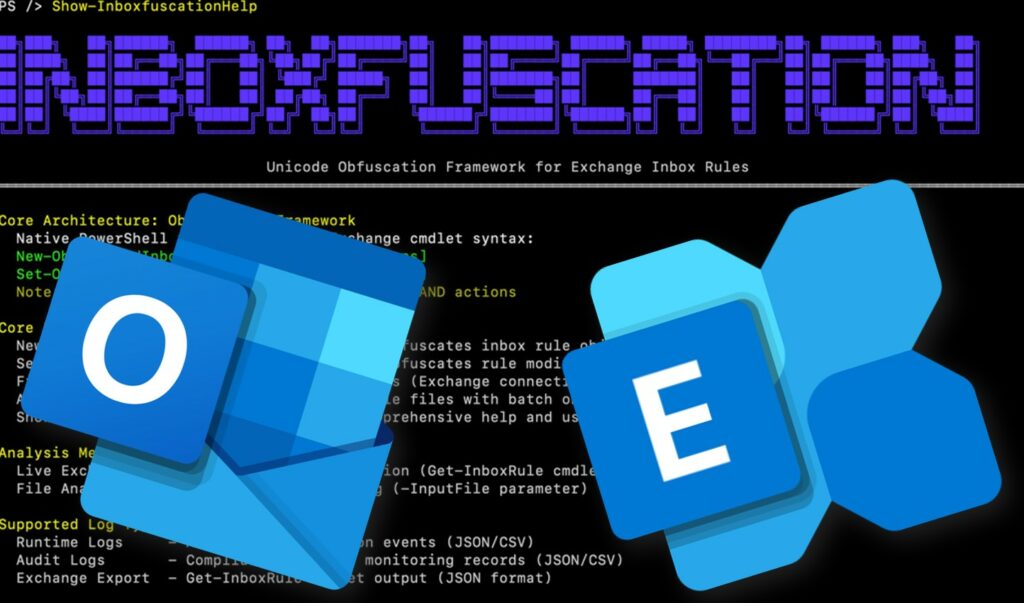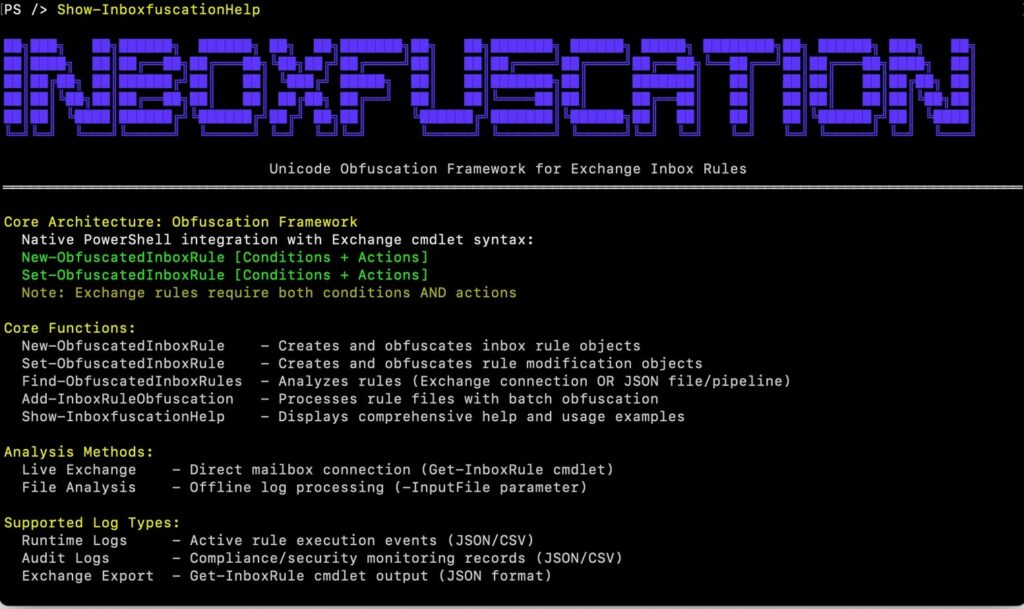
Attackers are increasingly using Microsoft Exchange inbox capabilities to ensure persistence and steal sensitive information within corporate networks.
Inboxfuscation , developed by Permiso, is a framework that demonstrates how attackers can weaponize Exchange’s rules engine, creating stealthy persistence mechanisms that evade both human review and code-based detection.

Inboxfuscation uses Unicode-based obfuscation techniques to generate malicious inbox rules that bypass traditional security systems.
In the past, malicious inbox patterns were often easy to spot : obvious keywords paired with actions like deleting or forwarding messages to attacker-controlled inboxes. Traditional security tools relied on keyword- and regular expression-based detection, strategies that were effective against visually obvious patterns.
The availability of a vast repertoire of Unicode characters, however, has opened up new avenues for circumvention. By replacing ASCII characters with visually similar variants or by exploiting system-wide normalization processes , it is possible to create rules that appear harmless to the naked eye but function logically differently, thus evading detection mechanisms that rely solely on simple text matching. While no campaigns using these techniques extensively have yet been observed, their technical feasibility represents a blind spot that requires attention.

Certain character categories make obfuscation particularly tricky. Character variants allow the appearance of common letters to be replicated; zero-width characters can be inserted between letters to break pattern matching without altering the visual appearance; bidirectional controls can reverse or reorder text rendering; circled or enclosed variants further alter visual perception. The breadth of the Unicode set offers numerous opportunities for visual and functional deception.
Obfuscation techniques are organized into different approaches that can be used individually or in combination. Character substitution replaces recognizable symbols with Unicode equivalents; zero-width injection breaks patterns with invisible characters; bidirectional manipulation uses directionality controls to confuse rendering; hybrid combinations mix these methods to maximize evasion. These strategies allow seemingly innocuous rules to evade both human judgment and automated detection.
In addition to text obfuscation tricks, there are functional techniques that alter the behavior of email rules. Messages can be automatically diverted to unconventional folders, making them invisible in normal views, null characters or spaces can be inserted to cause a condition to apply to all messages, or size parameter normalization can be used to create filters that trigger on every email. Such manipulations can transform seemingly innocuous rules into persistence or obfuscation mechanisms.
To address these threats , the presented detection framework adopts a multilayered approach compatible with different Exchange log formats. The system identifies suspicious Unicode categories, analyzes logs in various formats, and produces structured output for integration with security operations systems . Recommended actions include scanning mailboxes to detect obfuscations, analyzing historical audit logs to identify past compromises, and integrating the findings into SIEM and incident response processes. The research highlights gaps in current defenses, compliance risks, and forensic challenges related to Unicode complexity, encouraging the development of proactive capabilities.
Follow us on Google News to receive daily updates on cybersecurity. Contact us if you would like to report news, insights or content for publication.
